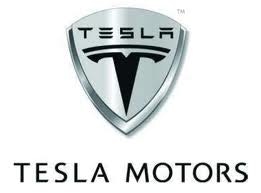While I agree there are some solid bear — along with bull — arguments for Tesla Motors Inc (NASDAQ:TSLA), these three common bear arguments should hibernate:
1. The Model S is more expensive than other EVs (and hybrids)
This argument goes like this: “The Model S is more expensive than its main competition, the Nissan Leaf and General Motors Company (NYSE:GM)’s Chevy Volt.” The writer then goes on to conclude that Tesla, therefore, won’t do well.
The entire premise is flawed. The Tesla Motors Inc (NASDAQ:TSLA) is a high-performance, full-sized, luxury vehicle with about a $70,000 base price. The Leaf, an EV, and Volt, a plug-in hybrid EV, are moderately-priced, smaller hatchbacks. (Leaf is classified as mid-sized, and Volt as a compact.) With few exceptions, we’re not talking the same type of buyer.
Tesla’s main competitors are mid- or full-sized, high-performance, high-end vehicles, such as select models from BMW, Daimler’s) Mercedes, and Volkswagen’s Audi unit. The Model S has a range of 265 miles per charge, so the fact that it’s an EV is almost irrelevant. That range covers about 95% of all driving. And once the charging station network is built out, the fact that it’s an EV will be totally irrelevant from a range-anxiety standpoint.
Luxury and performance aside, the beauty of Tesla Motors Inc (NASDAQ:TSLA)’s strategy is that unlike the other companies who entered the EV market, Tesla can compete with gas-powered autos because of its superior range. The Leaf’s range of 75 miles per charge makes it a no-go for many buyers.
Given all the awards and accolades the Model S has racked up (such as the Motor Trend Car of the Year; and a 99 out of 100 rating by Consumer Reports), this shouldn’t be hard to understand: The Model S is not “just” a superior EV, it’s a superior high-end vehicle. Period.
2. The Model S is too pricey relative to the average-priced vehicle
The conclusion here is, “So, the company has limited growth potential.”
This is a solid concern, as at some point growth would likely be limited by an exclusive focus on the high-end market. However, Tesla is far from that point.
Additionally, I think the argument itself is premature as all new technological products are pricey at first – and then come down in price as they benefit from economies of scale and technological advances (and economies of scale are a huge factor for automakers as they have high fixed-costs). Cases in point:
Color TV
When NBC began color broadcasts in 1954, a color TV from Westinghouse cost more than $1,000. That’s about $10,000 in today’s dollars.
Microwave oven
In 1967, Raytheon introduced the first popular home model at a price of $495. That’s about $3,450 in today’s dollars.
And closer to (Tesla’s) home — gas-powered auto
Karl Benz’s first four-wheeled gas-powered automobile cost $4,500 in the mid-1890s. That’s about $122,000 in today’s dollars.
3. The Model S is too pricey relative to other high-end, but gas-powered, vehicles
This argument is based on several faulty premises, and is also not accurate in some cases.
The writer uses a net present value, or NPV, analysis pitting the Tesla Model S with a specific higher-end car model or two. The goal is to show the Tesla’s fuel savings does not justify its somewhat higher cost. The conclusion is, “therefore, people won’t buy them or EVs.” (Those folks obviously haven’t seen the Q1 2013 sales figures for large high-end cars! Tesla Motors Inc (NASDAQ:TSLA) trumped the competition — chart at end of section.)
There are several things wrong with this one, but let’s keep it to the biggies. Let’s even go with the assumption that the Model S is pricier than the high-end competition, which is not accurate across the board.
Firstly, affluent people who are deciding between high-end cars – or high-end anythings, for that matter – are almost never making buying decisions based solely on an economic basis. In fact, I’d go further and say that holds true for most middle-income people, too. This is even truer with certain products, such as cars, as there are numerous factors at play: aesthetics, safety, reliability, etc.
Secondly — and related, cars are not commodities to most people. How can one suggest that another vehicle is exactly-to-nearly comparable to a Tesla Model S? Or select other distinct vehicles? Ford Mustangs, for instance?
Example: Let’s say a Mercedes, BMW, or Audi model ‘whatever’ is X dollars cheaper in present-dollar terms for many drivers. So, what about people who prefer the aesthetics of a Tesla Motors Inc (NASDAQ:TSLA)? What about people who don’t want a car that many others drive? What about people who want to support an American company? What about people who like the idea of electricity powering their vehicle rather than gasoline for whatever reason (environmental, national security)?
Q1 full-sized luxury vehicle sales
Won’t sell well? Not selling? Me thinks those bears’ porridge is spiked!

Source: CNN Money, from LMC Automotive data
Takeaway
Along with some solid bull arguments, there are some solid bear arguments — notably the valuation (122 times projected EPS for 2014) — for Tesla Motors Inc (NASDAQ:TSLA) stock. However, there are some common bear arguments based on faulty premises, which investors should ignore because they’re “noise.”
The article Tesla Motors: 3 Bear Arguments That Should Hibernate originally appeared on Fool.com and is written by BA McKenna.
BA McKenna has no position in any stocks mentioned. The Motley Fool recommends Tesla Motors. The Motley Fool owns shares of Tesla Motors. BA is a member of The Motley Fool Blog Network — entries represent the personal opinion of the blogger and are not formally edited.
Copyright © 1995 – 2013 The Motley Fool, LLC. All rights reserved. The Motley Fool has a disclosure policy.

